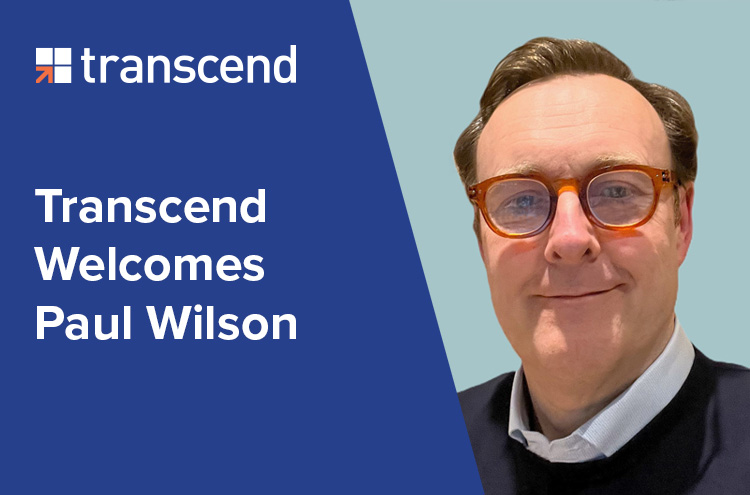Implementing and Expanding a Collateral Optimization Program
- Dec 6, 2021
- Blog Collateral Optimization Derivatives UMR
On November 30, ISDA hosted a virtual Collateral Optimization Showcase, bringing industry leaders together to discuss to the importance of collateral optimization. Transcend’s BJ Marcoullier participated in the event, discussing challenges and advice for implementing an optimization program. Alongside BJ, session participants included:
- Josh Galper, Managing Principal, Finadium
- Mike Bridger, Global Head of Collateral Optimization, Credit Suisse
- Liam Huxley, CEO & Founder, Cassini Systems
- Kevin Khokhar, Vice President, Derivatives & Multi Asset Trading Solutions, T. Rowe Price
- Sagar Patel, Americas Head of Tri-party Product, J.P. Morgan
During the session, it was made clear that UMR has created a significant opportunity for firms to prioritize collateral optimization. While collateral historically was never treated as its own asset class, UMR has increased demand, underlining the potential of collateral as well as the resulting opportunity cost if not optimally utilized.
While the goal of collateral optimization is clear, the panelists discussed the many challenges of building a cross-product, centralized, and scalable collateral optimization program:
Strategic Planning
The first challenge of implementing a collateral optimization program centers on strategic organization. Stakeholders with varying goals must agree on important questions such as who will own the implementation project, whether or not the function will be centralized, the scope of the project, and what KPIs will be used to measure program effectiveness and success. This first step can take months, if not, years, to complete.
Data Framework
The second challenge of collateral optimization centers around data. Firms must figure out how collect, organize, normalize, and aggregate collateral data in a single golden-source. Firstly, connecting to external providers like CCPs or Tri-party agents can require a significant IT investment. Secondly, once the data connections are created, firms must create a taxonomy that normalizes the data, allowing it to be aggregated firm-wide. For example, with different teams often classifying varying products with different names in disparate systems (i.e. U.S. Government Treasury Bonds vs. UST), it can quickly become a time consuming task to normalize data across the enterprise.
Decision Making
A third challenge is getting stakeholders to agree what are the key opportunities and goals of optimization. While some teams may want to solve for liquidity and unsecured funding, other teams may care about haircut optimization while other teams care purely about regulatory risks. Creating an optimization program that satisfies the goals of each stakeholder and can easily pivot as needs change is typically not an easy feat.
Execution
The final primary challenge of implementing a collateral optimization program is all about execution. Not only must firms launch the program in a way that effectively scales, but they must also implement the program in a way that is operationally efficient. An optimization program is pointless if it suggests hundreds of moves and trades in order to book a single optimized collateral allocation that the firm ultimately does not have the bandwidth to support. Firms should figure out how to build an optimization program that is efficient, or better yet, achieves STP.
With the many challenges of implementing a collateral optimization program, panelists also gave showcase attendees some advice:
- Understand that you can’t accomplish all optimization goals on day one: Identify your short- and long-term goals and map out an implementation timeline that considers priorities, potential friction, and risks.
- Think big: Even if your initial optimization goals are focused on one product or challenge, plan for program resilience and cross-product optimization. The earlier future challenges and goals are considered, the easier it will be to maintain, sustain, and scale your collateral optimization program.
- The more the merrier: Include internal and external stakeholders across the front and back offices in the initial planning and strategy stages. If legal and operations do not understand the end goal of your optimization program from day one, it will be difficult to resource and execute when the plan is ready.
- Don’t let the UMR opportunity go to waste: UMR has created a very clear opportunity for firms to obtain budget for collateral optimization projects. Firms that only see UMR as a regulatory mandate that requires a box to be checked are leaving 5-15 bps in potential annualized savings on the table.
- Technology is not a binary buy vs. build question: Vendor technology has come a long way in being able to complement and accelerate a firm’s existing strategy. External technology providers are able to provide the connectivity or functionality that quickly fills in the gaps of existing capabilities, making it easier than ever for firms to drive a collateral optimization project from theory to measurable results.
Undertaking a collateral optimization project can seem daunting, but with the right mindset, partners, and solutions, firms can implement a collateral optimization program that delivers transformational results. With UMR still receiving a lot of attention, now is the time to incorporate collateral optimization into your strategy.
Transcend is proud to partner to help clients map out an optimization plan that quickly satisfies immediate goals and scales to address future aspirations. Learn more about our Collateral Optimization solution.






